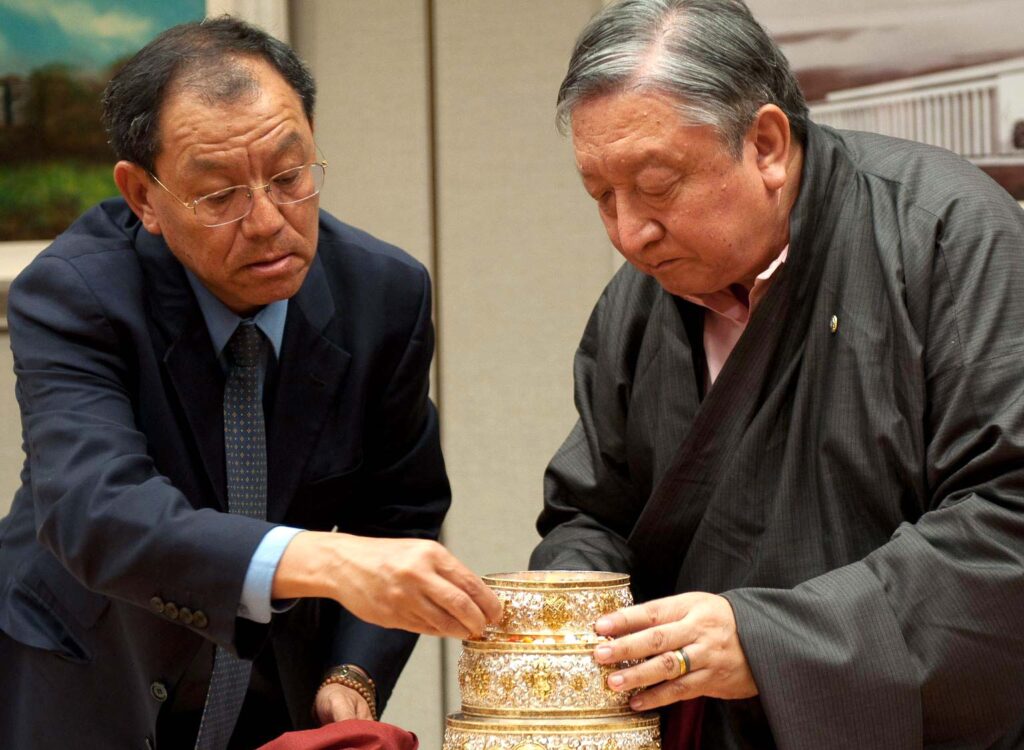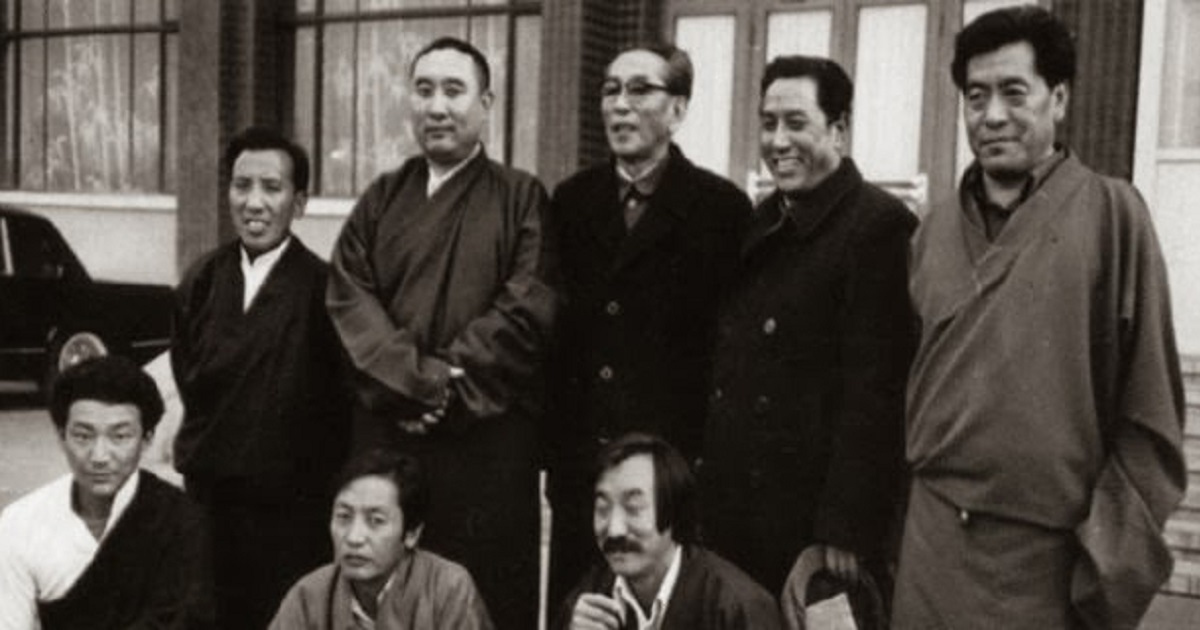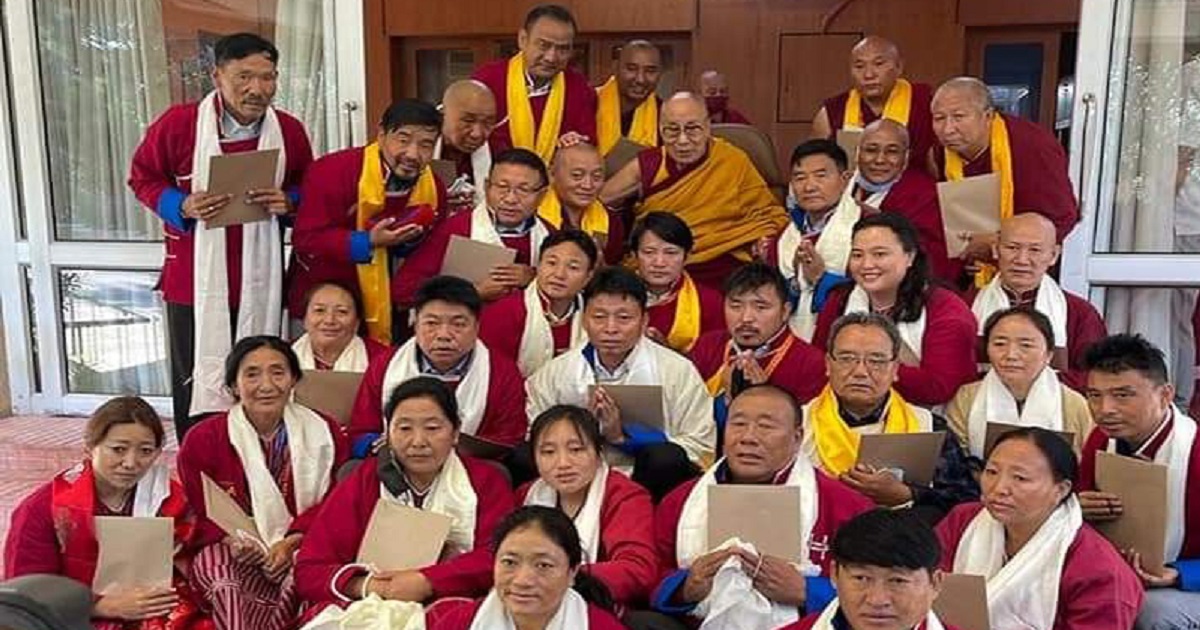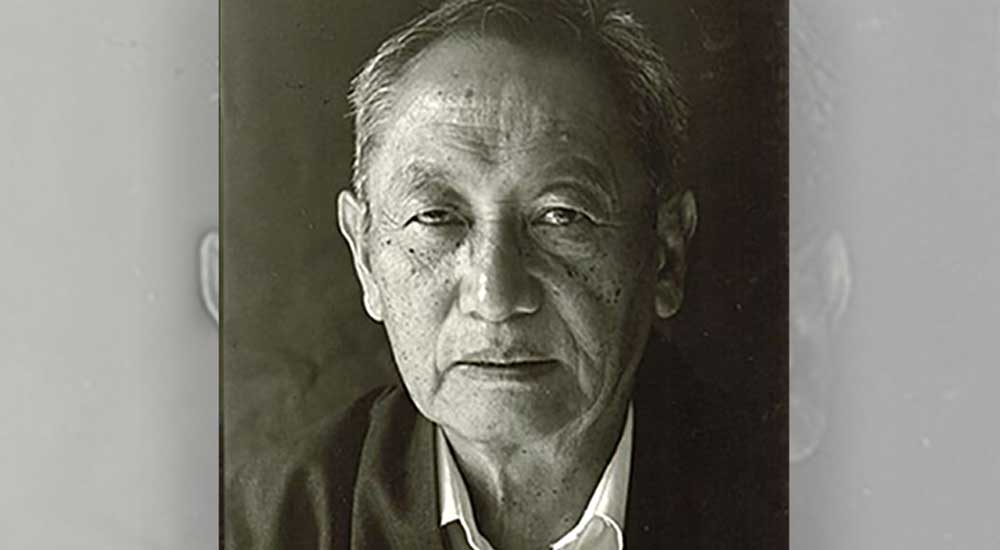
Lobsang Dhargyal Phunrab
From the time of his arrival in India in 1959 following the Chinese takeover of Tibet till his demise, he was involved in public work. Initially, in Kalimpong, the first town in India where he resided (with the Dakgyab Rinpoche, more about him later) he began teaching Tibetan to fellow refugees. Thereafter, after moving to Bylakuppe in now Karnataka state in South India, to the first Tibetan refugee settlement of Lugsung Samdupling, he was involved in teaching classes for adult settlers. He also served on the board of the settlement’s cooperative society, which provides support to the refugees on all aspects of their agriculture work. The society is overseen by a board of elected people from the settlement, and he was elected to it.
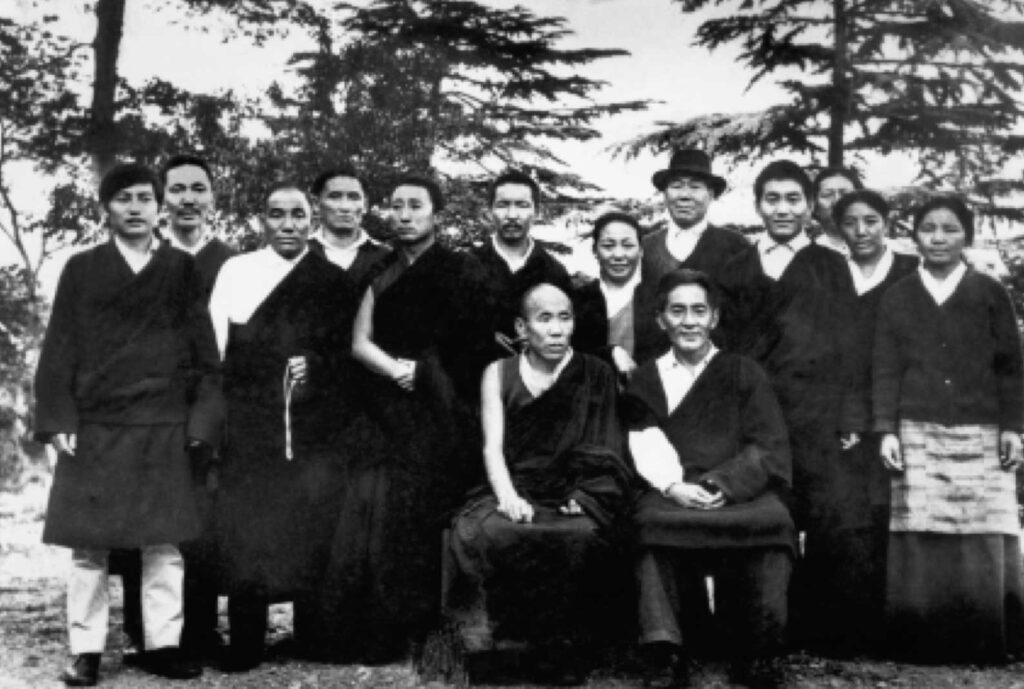
Lobsang Dhargyal Phunrab (standing first left) with his colleagues in the Tibetan Parliament for the 1969-1972 period.
From 1969, he was thrust into the Tibetan national scene when he was elected to the Tibetan Parliament-in-Exile as a representative of U-Tsang province, and thus moved to Dharamsala. He served for three terms until 1979, and moved up the hierarchy, being elected the vice chair of the Parliament in 1976. In 1979, he was appointed as a member of the first fact-finding delegation sent by His Holiness the Dalai Lama to Tibet.
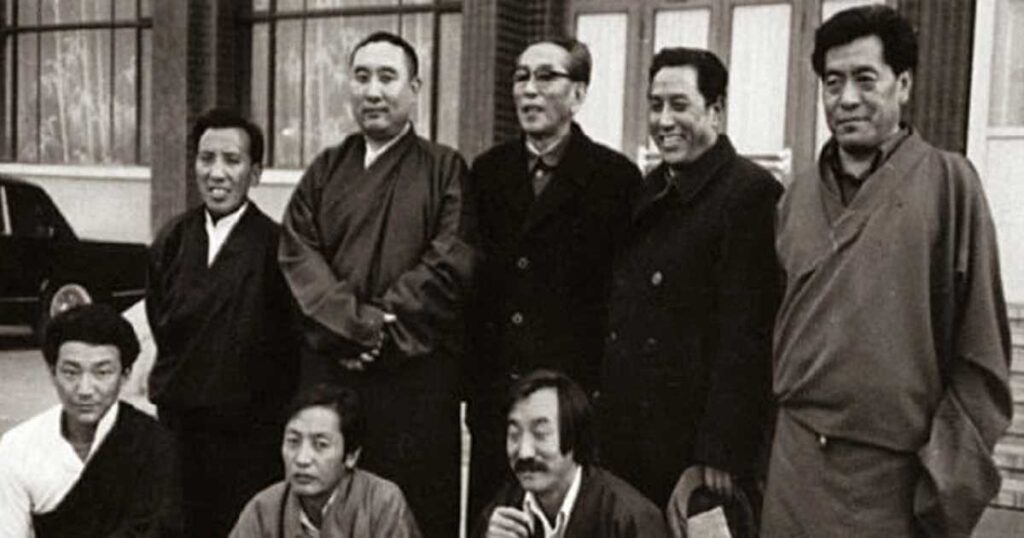
Lobsang Dhargyal Phunrab (kneeling second from left) and members of the first fact-finding delegation with the Panchen Lama, Ngapo Ngawang Jigme, and Bapa Phuntsok Wangyal in China.
Following his stint in the legislative wing of the Tibetan administration, he moved to the executive wing in 1980 when he was appointed the finance secretary. He served in that position for three years until 1983 when he was appointed finance minister by H.H. the Dalai Lama, who was then the head of the administration. He was the minister until May 1990 when the Tibetan administration was completely overhauled by His Holiness at the leadership level as part of his continuing democratization process, and the ministers began to be elected, rather than appointed by him.
During his tenure in the Department of Finance, Kungo Lodhar la was also overseeing the newly established Planning Council within the Kashag (cabinet).
In 1991, the three constitutionally autonomous bodies of Election Commission, Public Service Commission and Office of the Auditor General were established to enable a more transparent and independent oversight of the work of the Tibetan Administration. Kungo Lodhar la was appointed to hold the position of acting head of the new Tibetan Election Commission.
In 1992, the Tibetan administration saw a major development with the Parliament enacting laws to establish the Supreme Tibetan Justice Commission, the judiciary wing. The Justice Commission was mandated to be responsible for adjudicating all civil disputes in the Tibetan community, within the laws of the host countries. Kungo Lodhar was appointed as the first Supreme Justice Commissioner. Altogether he served as the Justice Commissioner for over 10 years, until his retirement in 2002. For the critical first five years of the Justice Commission, he was the sole Justice Commissioner, during which time he had the unenviable task of overseeing the drafting of the necessary codes, the Tibetan Judiciary Code, Civil Procedure Code and Evidence Code, as the basis of the work of the Commission. Despite the challenge of not having a legal background, he understood the vision of His Holiness the Dalai Lama and put in all the efforts, reaching out to anyone who could support the initiative. I recall him coming to the United States in 1998 to meet with then-Supreme Court Justice Stephen Breyer as well as to exchange ideas with law professors, all of whom were intrigued by this unique Tibetan experiment of a judiciary in diaspora.
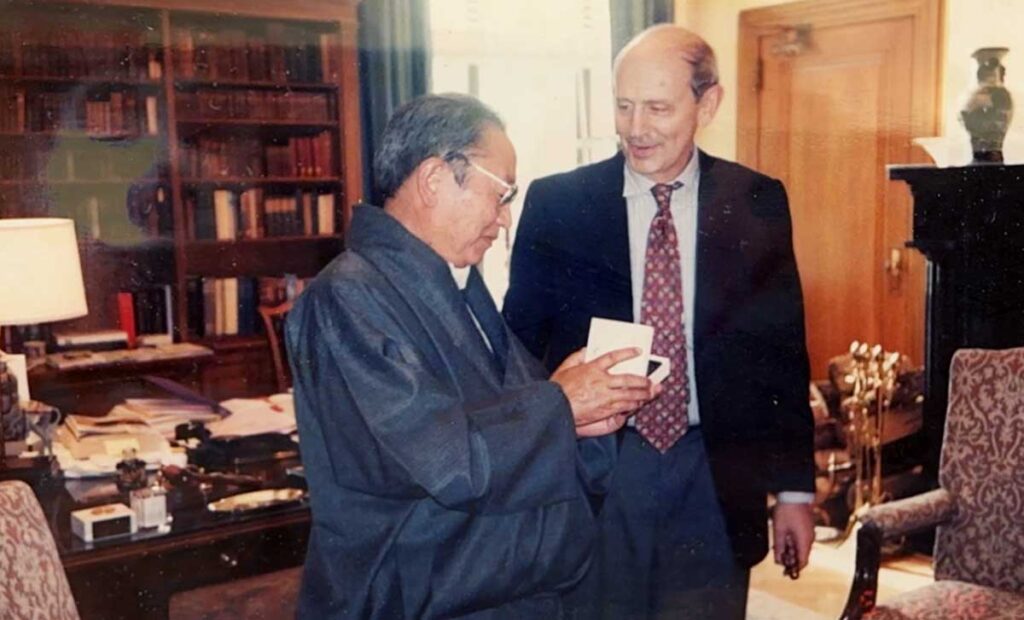
Lobsang Dhargyal Phunrab with Justice Stephen Breyer in his chamber in the United States Supreme Court in Washington, DC. (Photo from his family collection)
In any case, Kungo Lodhar la was assisted in his work by Ani Vajra Sakya, a lawyer by training and one of the sons of the head of the Phuntsok Phodrang of the Sakya lineage. Ani Vajra Rinpoche had come from the United States to Dharamsala to be of service to His Holiness the Dalai Lama and the Tibetan people. Eventually, the codes were formulated, and in February 1996, His Holiness the Dalai Lama approved the three codes, and these are the backbone of the Justice Commission even to this day.
His Holiness the Dalai Lama specifically wanted to establish the Justice Commission so that the administration would be accountable to the people. He felt that the Tibetan public should have a system in place that would not only provide them the third pillar of democracy nominally, but more importantly enable them to exercise their rights to challenge the working of the administration when they perceived abuse of power or privileges, etc.
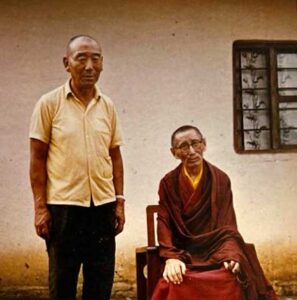
Dakgyab Rinpoche with his steward, Chazoe Lobsang Khyenrab in Bylakuppe.
After serving until September 2002, Kungo Lodhar la retired. However, he continued his public service, being on the board of different organizations, including the Library of Tibetan Works and Archives and the Tibetan Centre for Human Rights and Democracy.
He was born in Tibet in 1937 and was related to Dakgyap Rinpoche Ngawang Lobsang Yeshi, the 14th reincarnation of Potowa Rinchen Sal, one of the three main students of prominent Tibetan Buddhist master Dromtonpa. From a young age, Kungo Lodhar la was in the service of Rinpoche. He and Losang Thonden la, a scholar and another relative of Rinpoche, assisted Rinpoche and his steward Lobsang Khyenrab when they escaped to India in 1959. Rinpoche had eyesight issues and could not see well while Chazoe la, as the steward was known, had leg issues and had problems walking.
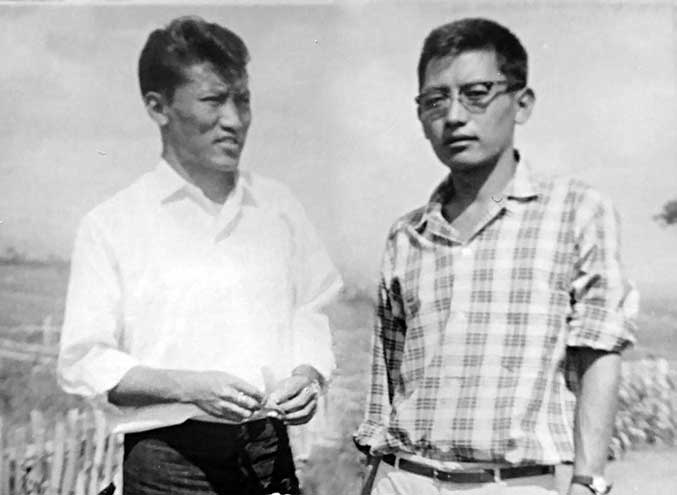
Undated photo of Lobsang Dhargyal Phunrab (right) and Losang Thonden in Bylakuppe.
In India, Rinpoche initially resided in Kalimpong, where Kungo Lodhar la had the opportunity to learn the rudiments of the English language even as he taught Tibetan to refugee students. When Rinpoche was appointed by His Holiness the Dalai Lama to look after the spiritual needs of the people in the Lugsung Samdupling settlement in Bylakuppe, Kungo accompanied him to South India and was with him until going up to Dharamsala in 1969. Dakgyab Rinpoche belonged to the Minyak Khangtsen (House) of Sera Mey Monastic University.
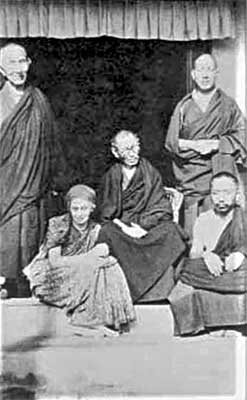
Uma Devi with Dakgyab Rinpoche and some unidentified monks in Bylakuppe.
When I joined the Central Tibetan Administration in the 1980s, he became a guide and a mentor to me, explaining to me the nature of the Dharamsala society, the leadership expectations and the workstyle of the officials.
The common perception of Kungo Lodhar la in the Dharamsala official circle was of someone who was sincerely dedicated to his work and adopted a gentle attitude to everyone. Even though his contribution to the institutional development of Tibetan democracy is formidable, not many know of this on account of his basic nature of not being in the limelight and his humility.
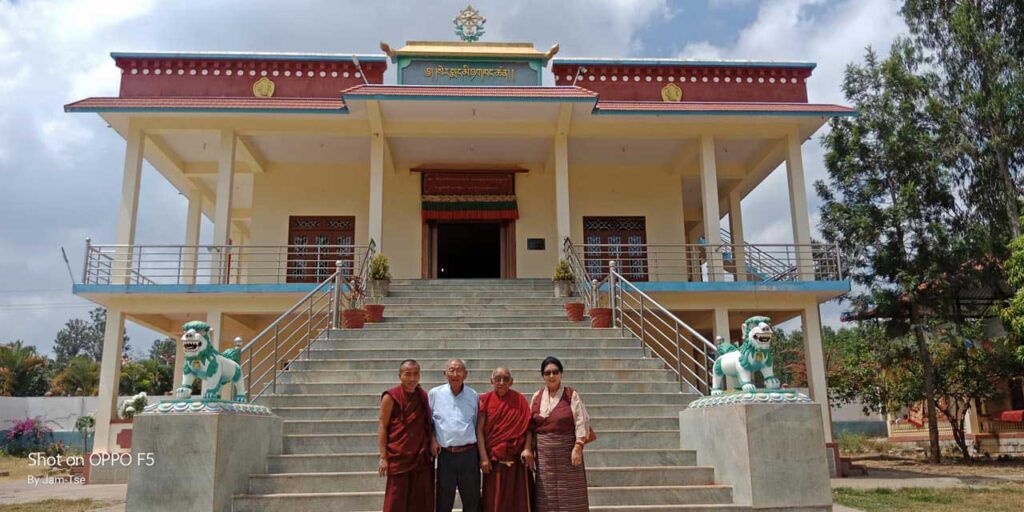
Lobsang Dhargyal Phunrab and wife Kaldon la with monk officials of Minyak Khangtsen of Sera Mey in Bylakuppe.
He is survived by his wife Kaldon la in Dharamsala, daughter Tenzin Kunsang Phunrab in Utah and son Tashi Topgyal Phunrab in California.


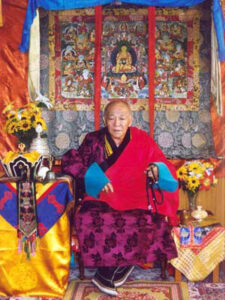
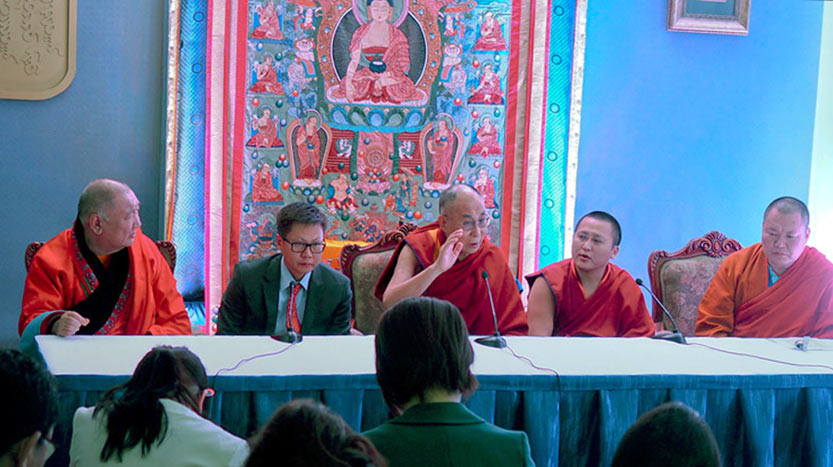
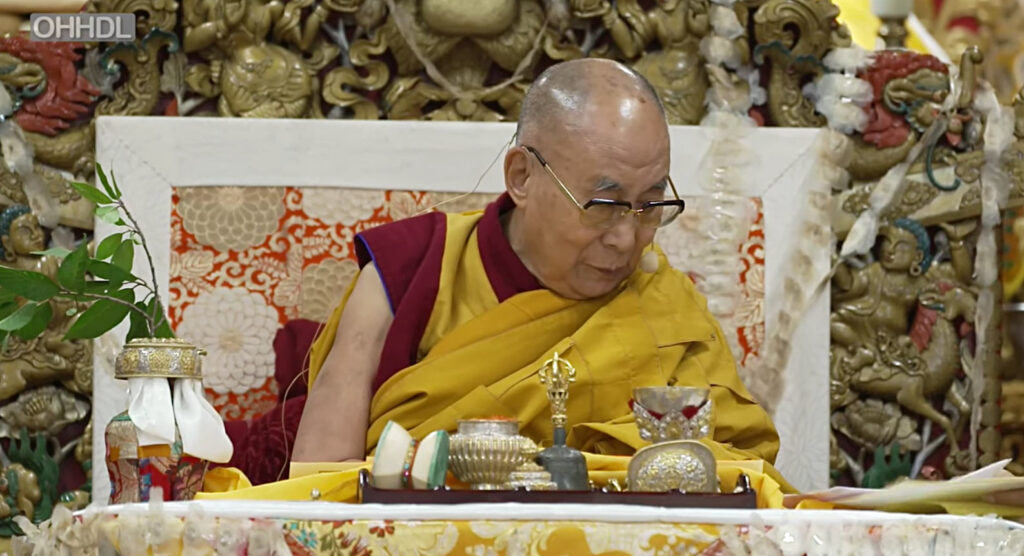
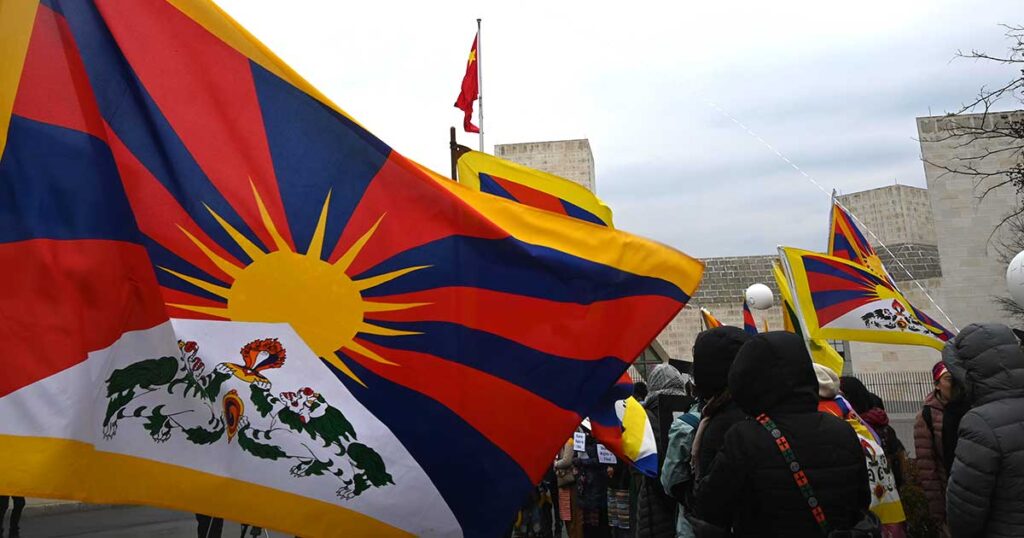
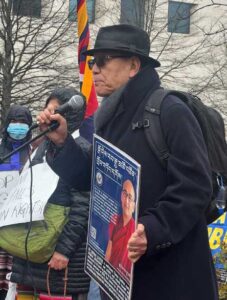
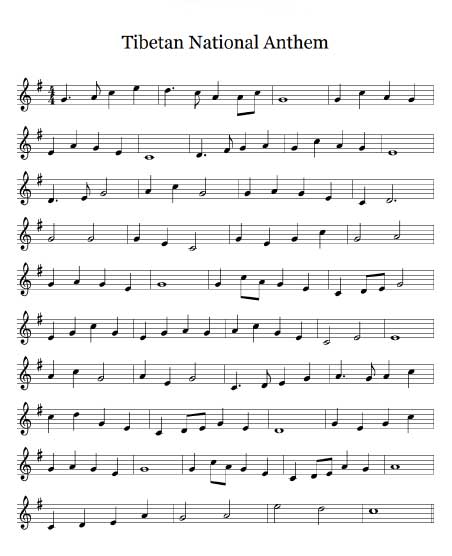
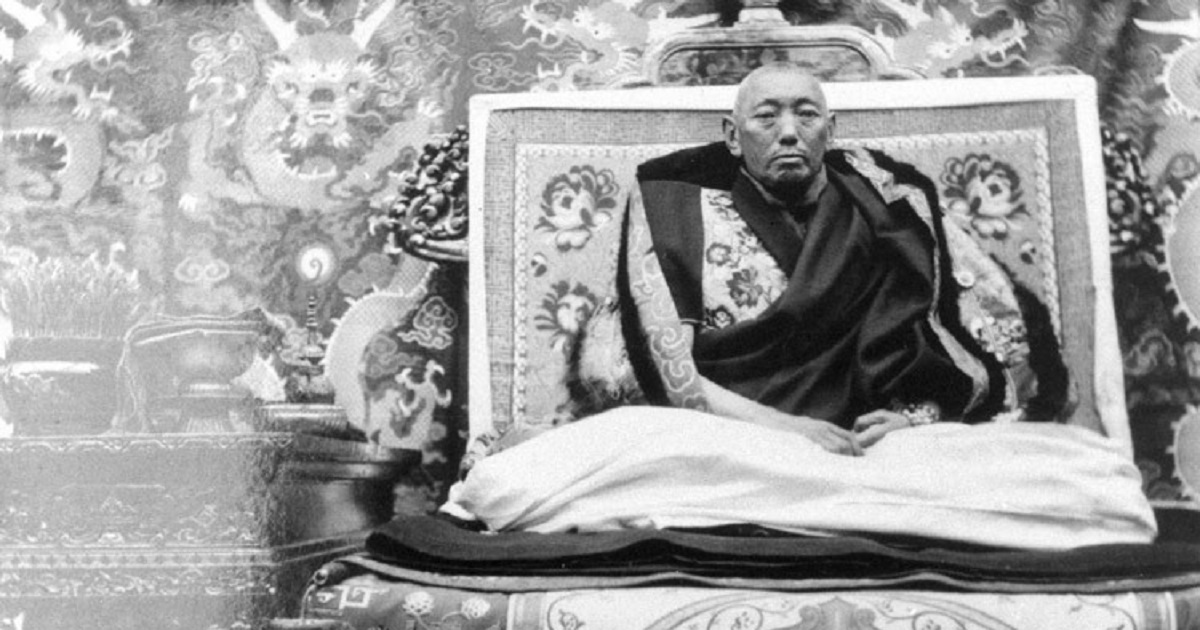
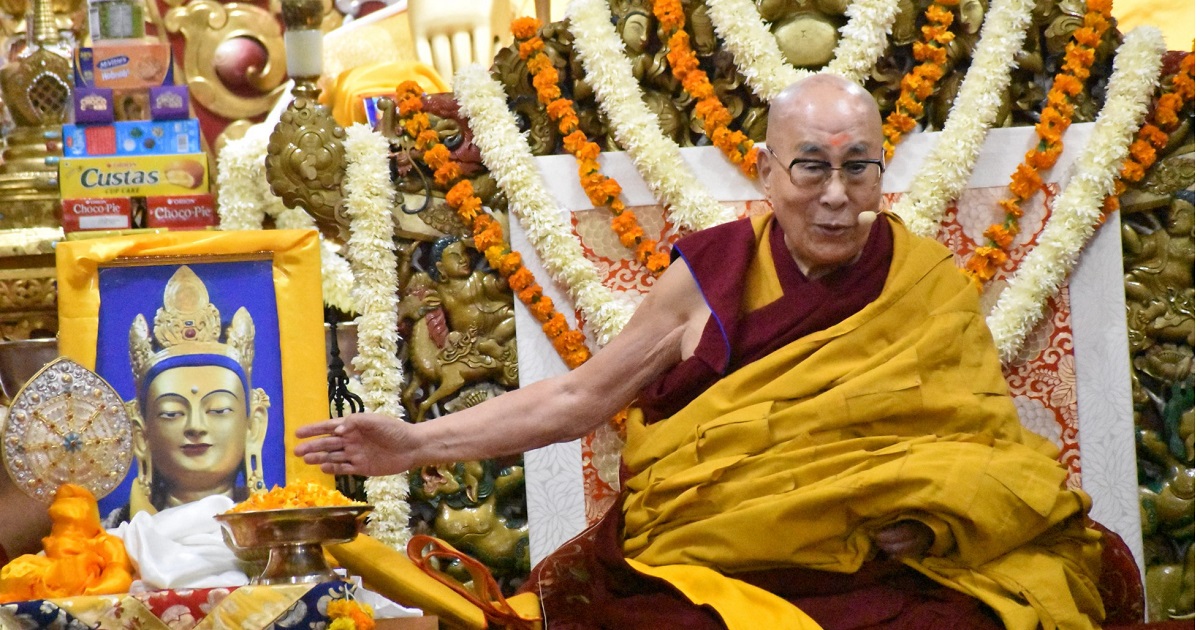
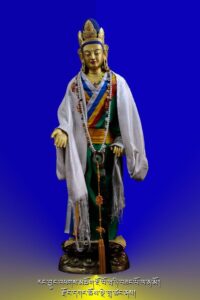
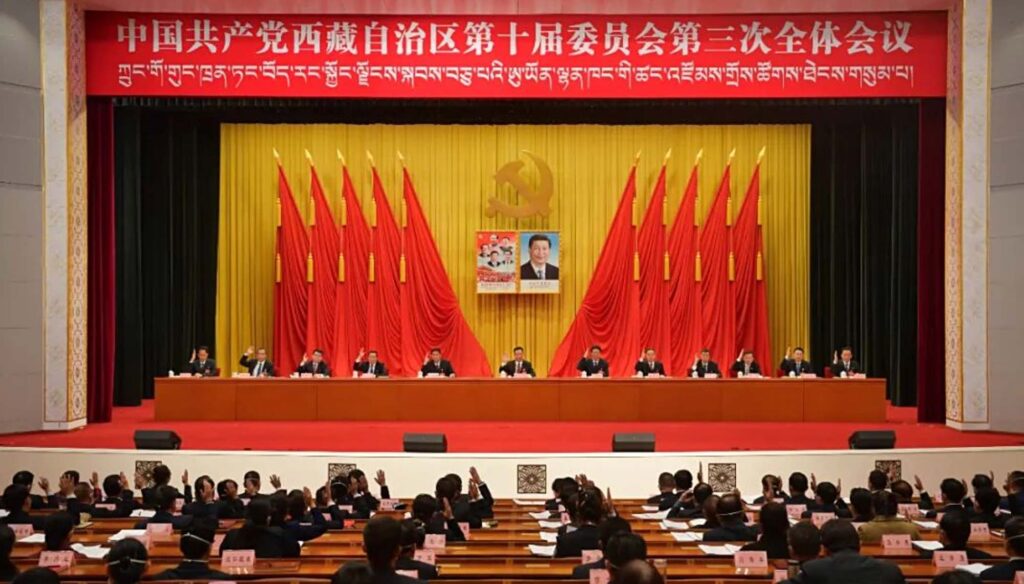
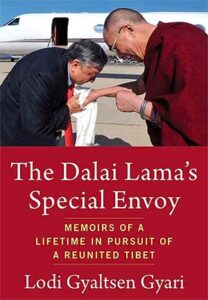 Even though Rinpoche, as he is reverently addressed by people in the Tibetan cultural world, is no longer with us, his legacy lives on and is a daily reminder to many of us at ICT who knew him. Now, a book that he had been working on since his retirement has been published by the Columbia University Press. It is aptly titled,
Even though Rinpoche, as he is reverently addressed by people in the Tibetan cultural world, is no longer with us, his legacy lives on and is a daily reminder to many of us at ICT who knew him. Now, a book that he had been working on since his retirement has been published by the Columbia University Press. It is aptly titled, 